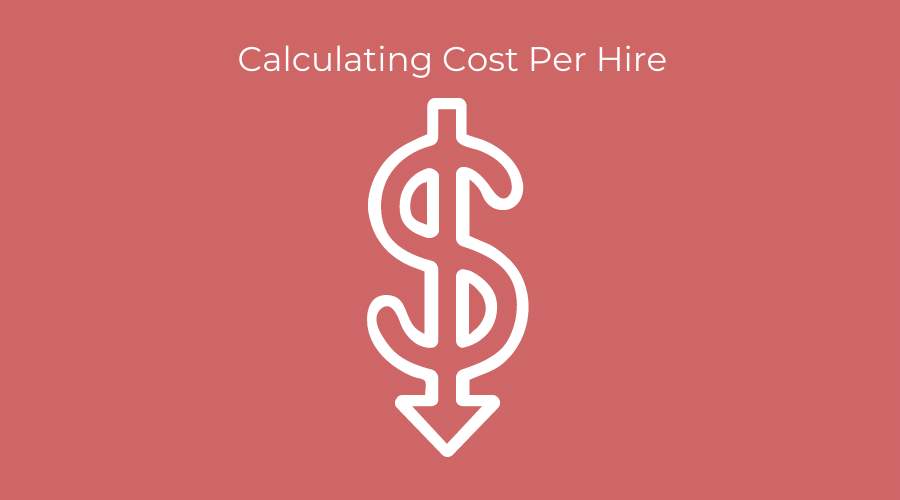Knowing the cost per hire is one of the more essential recruiting metrics. It ranks up there with source of hire and time to hire. Like those two, the cost of talent attraction reflects on the efficiency of your recruiting efforts, especially when you compare it against benchmarks for your industry or comparable occupations.
In order to provide a reliable yardstick for employers to measure and compare their cost of hire, the Society of Human Resource Management developed a formula that’s become an industry standard endorsed by the American National Standards Institute (ANSI). It lists all the possible types of expenses associated with hiring and goes into great detail about how to assemble it all.
It can appear intimidating, especially for smaller business, but not all applies to every organization. The standard itself allows for some estimating and says, “While this Standard defines the types of expenses to include, a ‘down to the penny’ reconciliation of costs into the precise buckets… is not required.”
Cost Per Hire Formula
Calculating cost per hire sounds deceptively simple. Add up the cost of advertising the jobs, typically the cost of posting to a job board like ZipRecruiter or Indeed. Add in any other out-of-pocket costs like travel expenses for candidates from out of the area and there you have it.
A surprising number of businesses, if they calculate cost of hire at all – one survey found 17% don’t – assume this is what it costs them to hire a worker.
They’re wrong. Even small businesses spend more to fill an open position than they suspect. The out-of-pocket cost for a job board posting is only the most obvious expense. But what about the time it took to write the ad, place it, review the applications, interview the candidates and make an offer? If the business is large enough to have a recruiter, their total comp is part of the equation, plus the infrastructure – desk, chair, phone, computer, etc. – to support them.
The SHRM formula for calculating cost per hire is itself straightforward: Internal costs + External costs divided by the total number of hires in a given period, most conveniently (but not necessarily) a year.
In a survey a few years ago, SHRM found the average cost per hire was $4,425. Half the almost 500 respondents reported spending less than $1,633. Hiring an executive was much more costly, averaging $14,936. Another survey a year before put the average cost per hire at right around $4,000.
What those surveys make clear is that hiring workers is expensive. And keep in mind these are average costs that take into account hiring everyone from an entry-level clerk to a CFO.
Let’s take a look at some of the more common costs of recruiting and hiring starting with the ones likely to be easiest to track. These are what the SHRM / ANSI standard calls “external costs.”
External Recruiting Costs
- Advertising expenses: Most commonly job board posting, but also including such sites as LinkedIn and Facebook, etc.
- Career fairs: The cost to participate for in-person and virtual fairs, plus the travel expenses of recruiters to attend.
- Agency fees: Costs paid to outside recruiting services.
- Screening and assessments: These include skills testing, medical screens, background checks and similar
- Candidate expenses: Interview travel, and travel and relocation costs paid to new hires, signing bonuses and, if necessary, immigration costs.
- Technology: The cost of the recruiting software.
Internal Recruiting Costs
- Recruiter salaries: Total comp package costs. For companies without full-time recruiters, use the portion of their time attributed to recruiting.
- Office costs: Office expenses attributed to the recruiting function, include a pro rata share of rent and office equipment.
- Interviewing: Time spent by hiring manager and others interviewing and selecting candidates. Include any time spent by these to prepare.
Once you know the costs, you can – and should — calculate the cost per hire by job type, department, management level and in other ways that make sense for your organization.
Having this information allows you to compare costs to identify ways of improving hiring efficiency. If one hiring team routinely conducts multiple panel interviews, it might be possible to streamline the process without sacrificing hiring quality. Candidates will certainly thank you for that.
There is one important ingredient missing from the cost of hire calculation and that is what can be called “lost opportunity.” An open position will have economic consequences: a project may be delayed, a sales opportunity missed, a customer who failed to get a deliver on time. No cost per hire formula takes this into account. It’s just too speculative nor is that the purpose of the measure.
Still, having an open position has a cost. In large organizations with other workers who can fill-in, the cost may be barely visible. The smaller the business, the clearer the financial impact.
The longer it takes to fill an open position, the more significant become those things that don’t get done or have to be delayed. So as you use your cost per hire strategically to measure recruiting efficiency and manage hiring expenses, keep that in mind.
Cheaper hiring isn’t always better.



